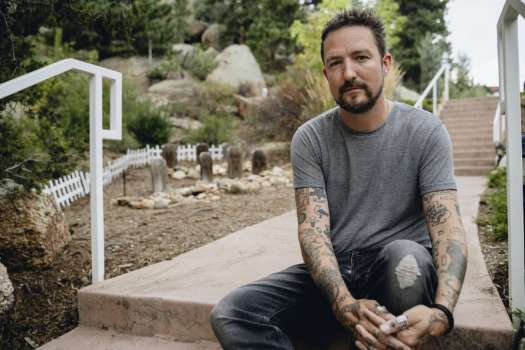When Google Earth and Google Maps first launched free and easy access to satellite images of pretty much the whole world, privacy advocates cried Big Brother and politicians fretted about rogue states and terrorists while fear-mongering headlines trumpeted, "Google Earth threatens democracy" and "Free pictures from space may threaten national security." Meanwhile, most of us saw all this newly available information and thought it was neat we could see what our rooftop looked like last year.
But that all changed when New Orleans sunk. Frantic residents at least those who managed to escape began logging on to look for their flooded homes and shocked citizens from around the world surveyed the damage. Google usually uses year-old satellite and aerial photos, but the National Oceanic & Atmospheric Administration gave them almost immediate images from Katrina's swath of destruction. A couple of Texan software developers quickly piggybacked on Google's efforts, launching an open-source website Scipionus.com which allowed thousands of survivors to tag their addresses with information such as "Dottie E. Millay & Sarah, house destroyed, they are okay at Moms." Others soon followed, aggregating information and providing maps of available shelters, while urban classifieds site Craigslist was used to locate missing friends and family or find temporary housing.
Once the army took over New Orleans and reporters began being threatened at gunpoint, on-the-spot news continued to leak out via blogs and indie media sites. Then tech-activists began arriving with donated computer equipment to set up wireless telecommunication centres. With landlines still down and government efforts in disarray, remaining residents, rescue workers and those in shelters were able to communicate via internet phone (VoIP) and email, upload disturbing digital images to photo sites like Flickr (even as the Feds tried to stop the media from photographing bodies) and set up low-power radio stations. Just as uploaded cell phone photos provided the first images of the terrorist attack on London's subway system, "citizen journalism" provided a faster and clearer look at what was going on in occupied New Orleans than the mainstream media ever could. It took a tragedy, but modern technology finally followed through on its promise to be more than just cool or convenient. In the wake of hurricanes Katrina and Rita, it became imperative.
Joshua Ostroff
But that all changed when New Orleans sunk. Frantic residents at least those who managed to escape began logging on to look for their flooded homes and shocked citizens from around the world surveyed the damage. Google usually uses year-old satellite and aerial photos, but the National Oceanic & Atmospheric Administration gave them almost immediate images from Katrina's swath of destruction. A couple of Texan software developers quickly piggybacked on Google's efforts, launching an open-source website Scipionus.com which allowed thousands of survivors to tag their addresses with information such as "Dottie E. Millay & Sarah, house destroyed, they are okay at Moms." Others soon followed, aggregating information and providing maps of available shelters, while urban classifieds site Craigslist was used to locate missing friends and family or find temporary housing.
Once the army took over New Orleans and reporters began being threatened at gunpoint, on-the-spot news continued to leak out via blogs and indie media sites. Then tech-activists began arriving with donated computer equipment to set up wireless telecommunication centres. With landlines still down and government efforts in disarray, remaining residents, rescue workers and those in shelters were able to communicate via internet phone (VoIP) and email, upload disturbing digital images to photo sites like Flickr (even as the Feds tried to stop the media from photographing bodies) and set up low-power radio stations. Just as uploaded cell phone photos provided the first images of the terrorist attack on London's subway system, "citizen journalism" provided a faster and clearer look at what was going on in occupied New Orleans than the mainstream media ever could. It took a tragedy, but modern technology finally followed through on its promise to be more than just cool or convenient. In the wake of hurricanes Katrina and Rita, it became imperative.
Joshua Ostroff




